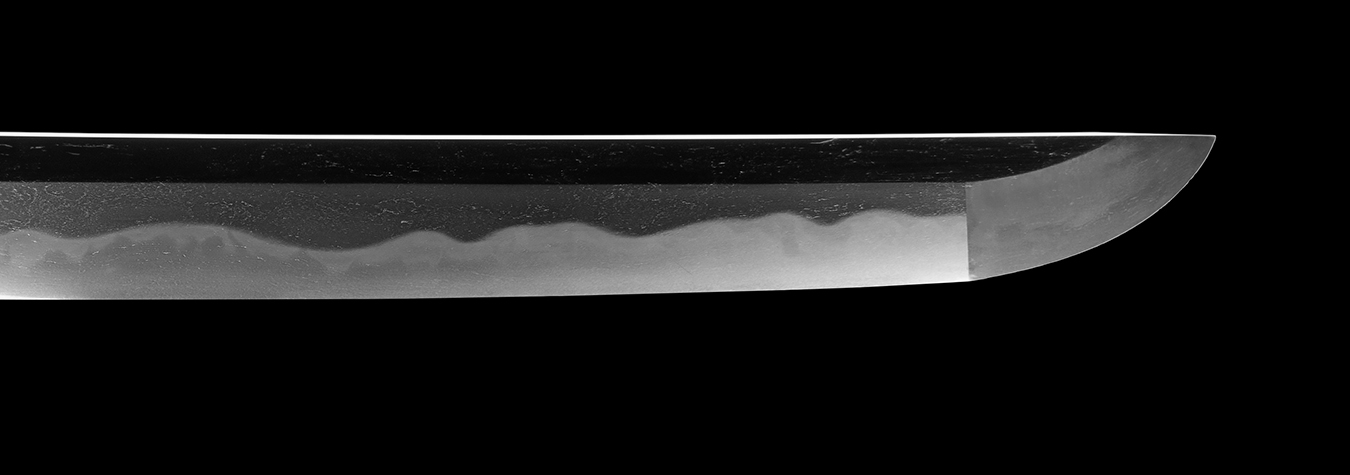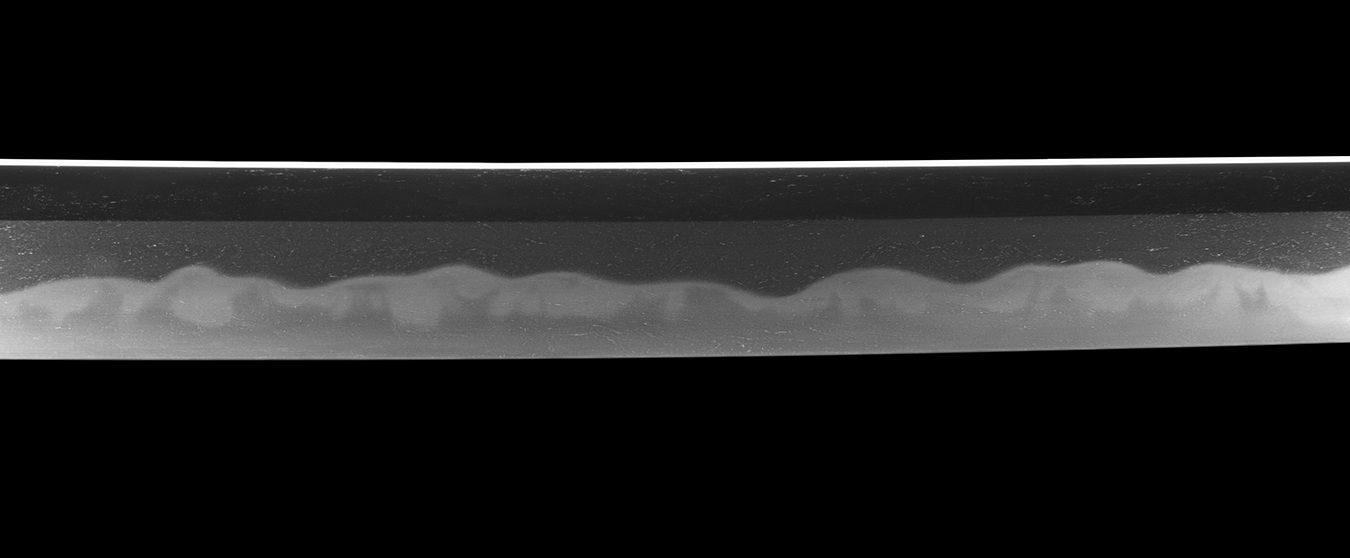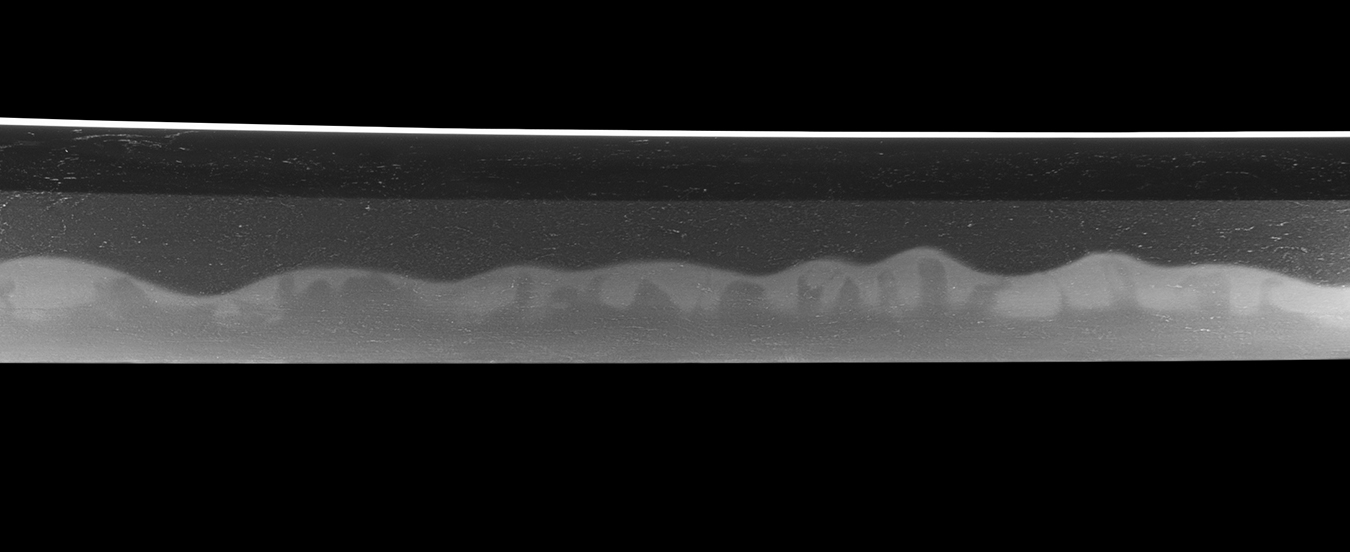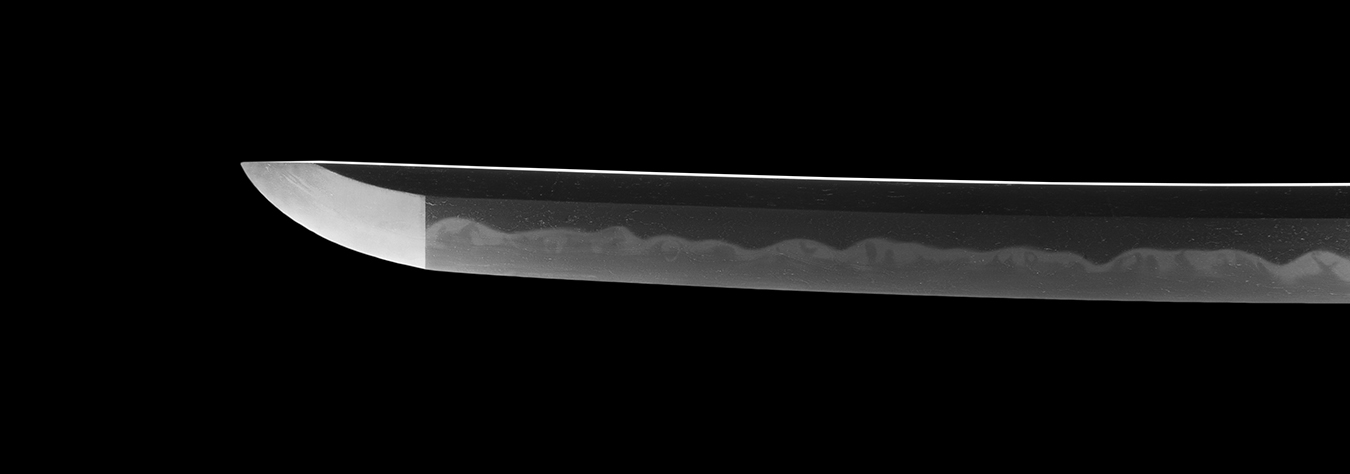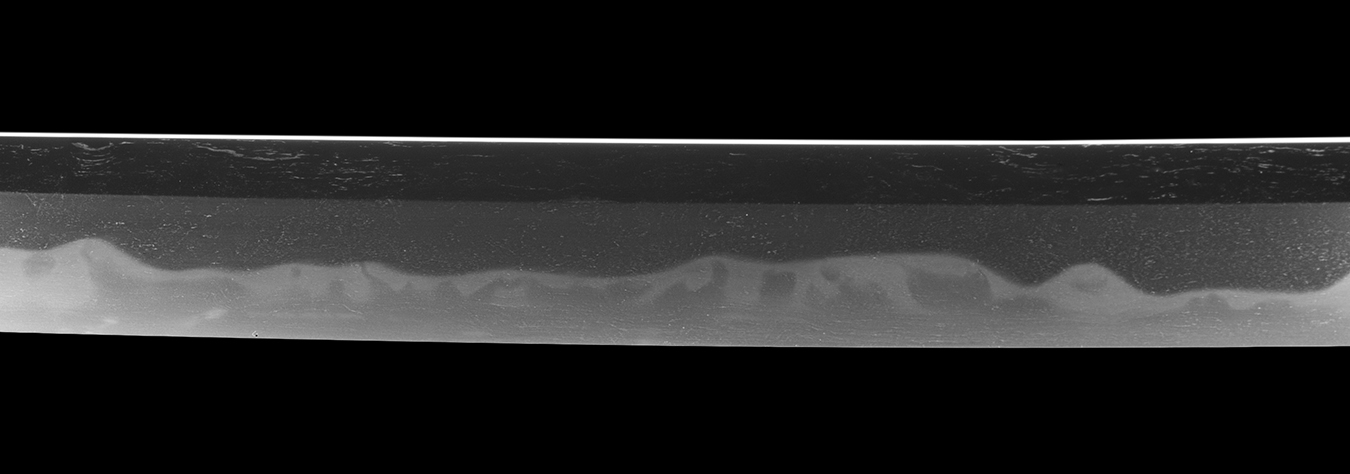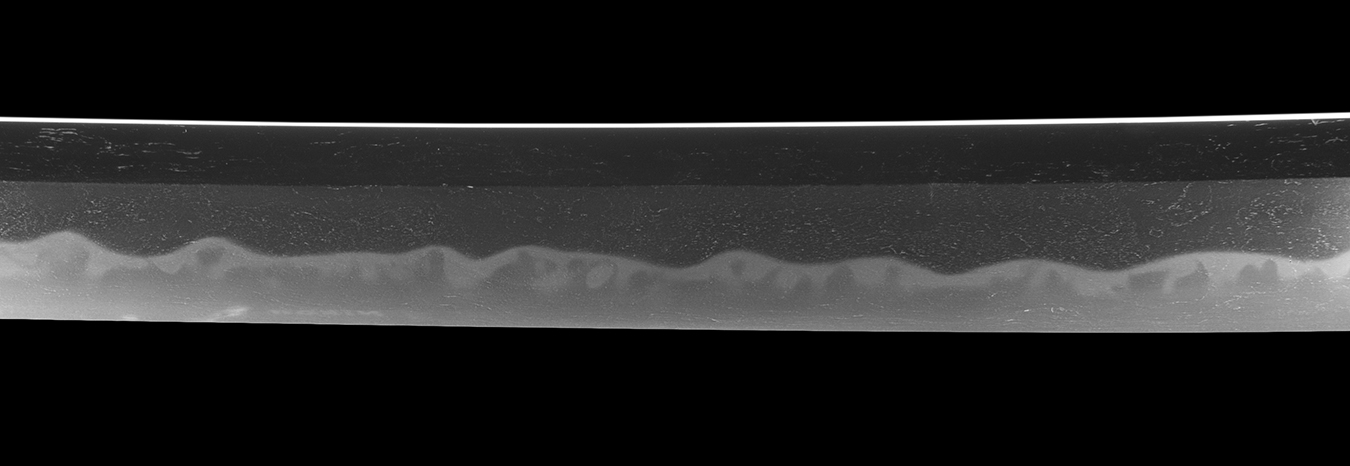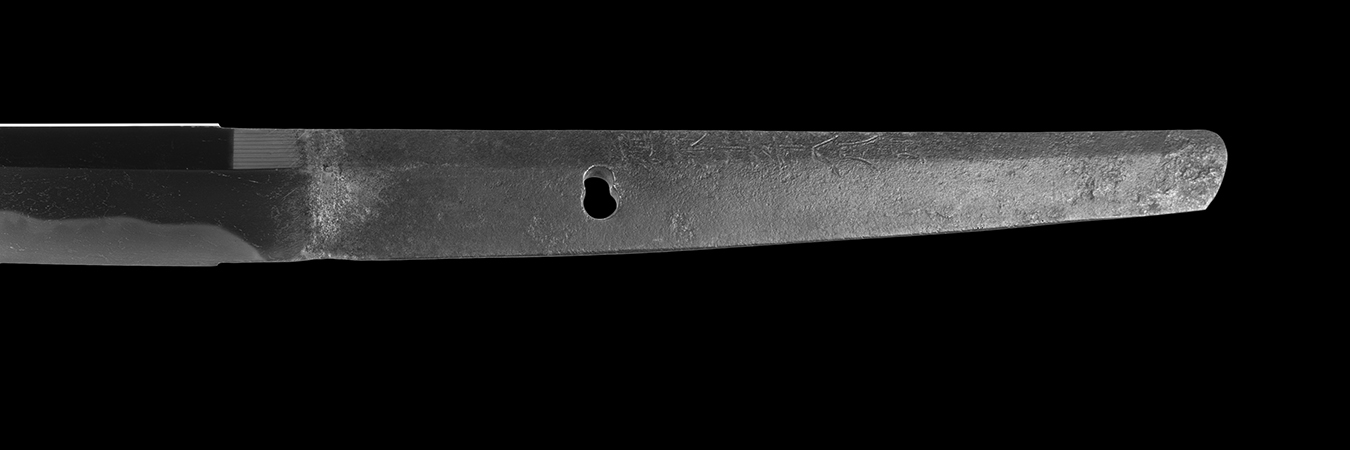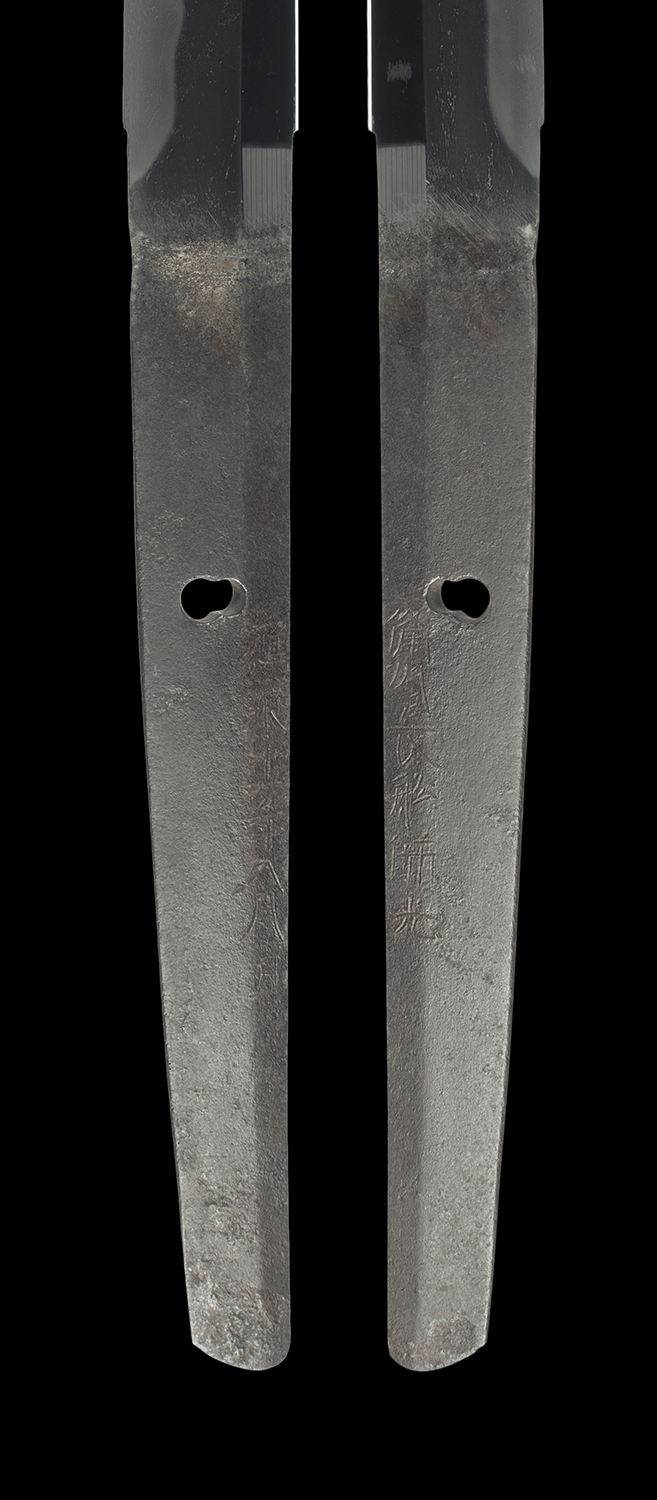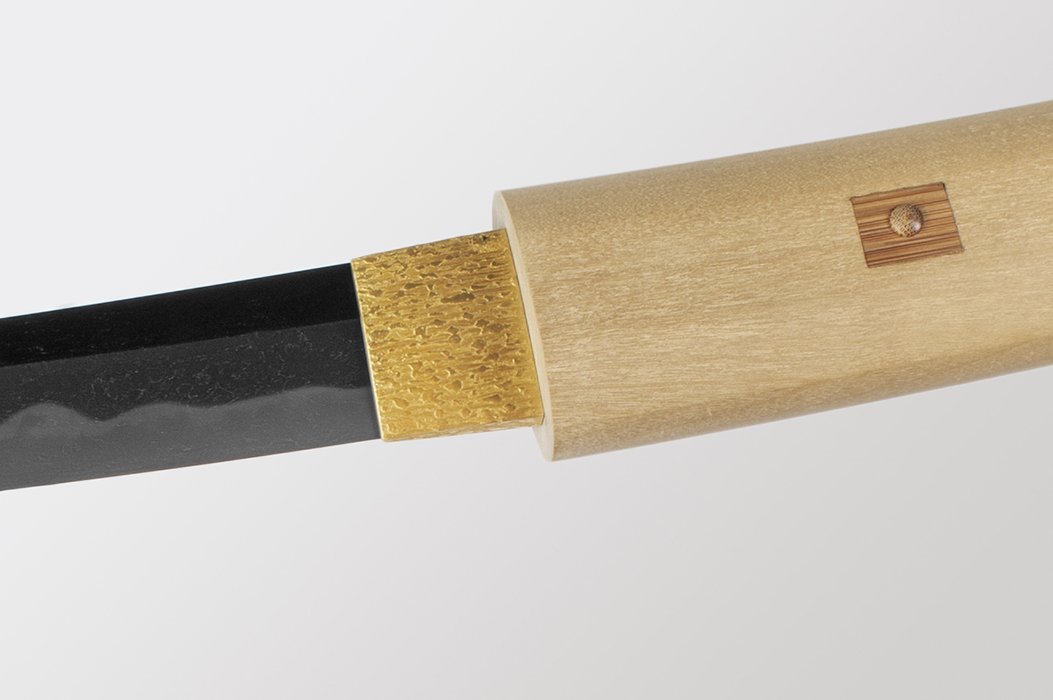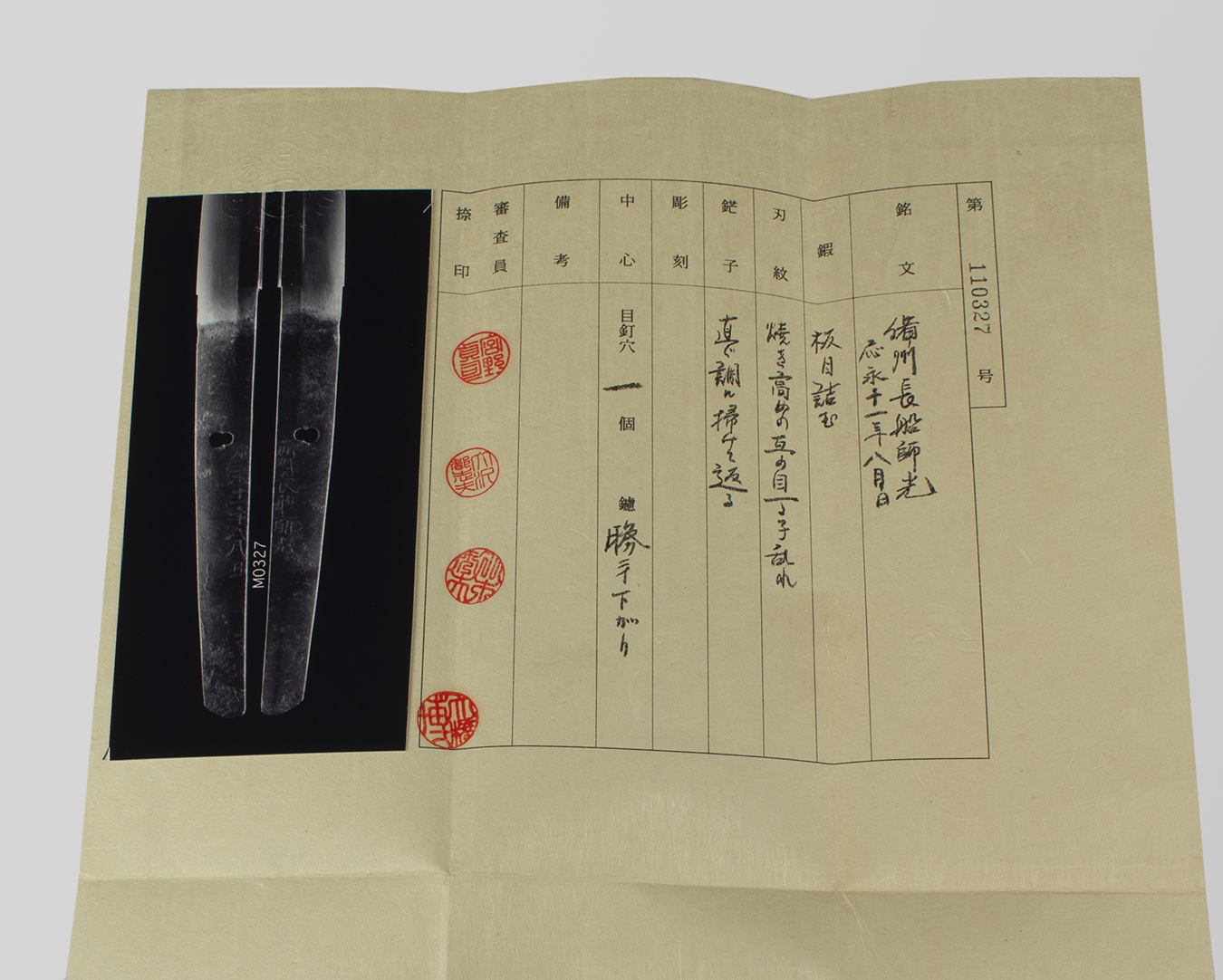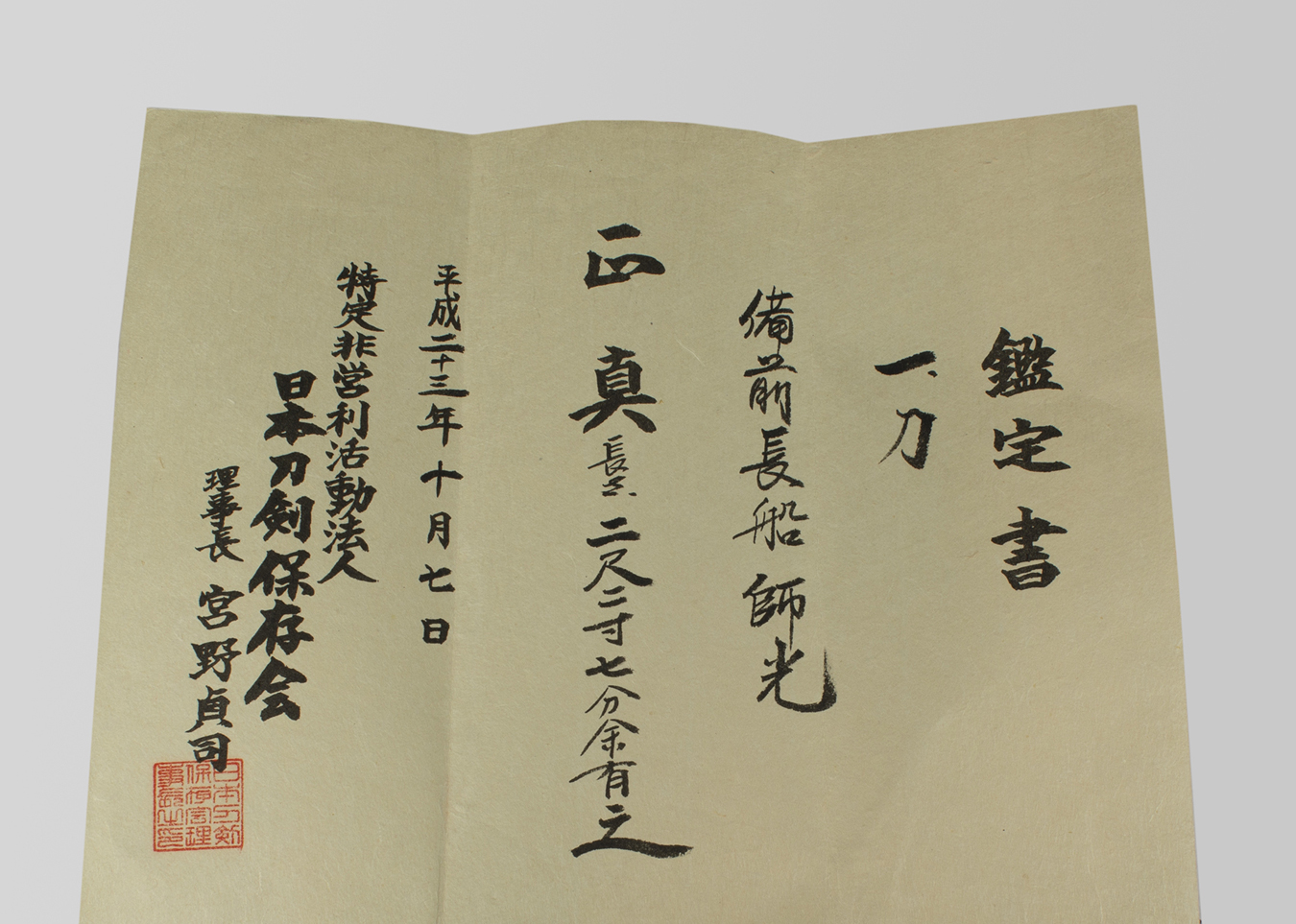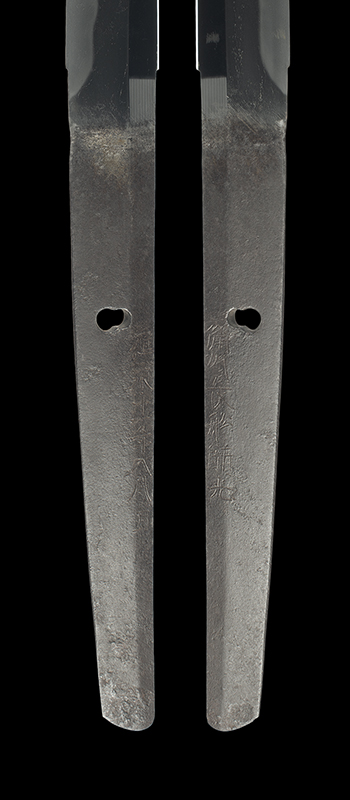|
| |||||||||||||||||||||||||||||||||||||||||||||||
Hamon : Nioi-deki gunome choji midare. The nioi-guchi is bright and the hamon is wide. Kawazuko-choji (tadpole shaped choji) and a flavor of kani-no-hasami (crab claw) shapes can be seen. Ashi are pelitiful and some yo can be seen.
Boshi : Hakikake and sprinkled with ko-nie. Tobiyaki is present on the ura. Kinsuji can be seen.
Kitae : Itame hada with masame mixed in, making a "flowing" pattern. The jigane is dense. Clear midare utsuri can be seen on both sides of the blade. Mitsy ji-nie is present. Tobi-yaki is present. The shinogi-ji is predominately masame with itame mixed in.
About this sword : This is a tachi by Bizen Osafune Moromitsu. He was the son of Bizen Tomomitsu and the father of Oei Bizen Morimitsu. He was active in the late Nanbokucho period through early Muromachi times. He is a highly regarded smith, ranked Jo Saku by Fujishiro, given 5.5 million yen in the Tokotaikan and ranked as Ryo Wazamono by the Yamada family for the cutting ability of his works.
This sword is in full polish. The blade is healthy and there are no kizu. The nakago is ubu with one mekugiana. The sugata of this tachi makes a powerful impression in one's hand. This blade dates to the dawn of the Muromachi Jidai and would have been in service during the great many battles to follow. It remains in remarkable condition considering the use it must have seen and the age of the blade.
This tachi is accompanied by an NTHK (NPO) kateisho paper which attests to the authenticity of the mei and the quality of the blade. It also has a moss pattern gold foil habaki, shira-saya with bamboo mekugi-ana inserts and a storage bag. An exciting ubu, zaimei, dated tachi by Moromitsu that is delightfully representative of his text-book work style.


